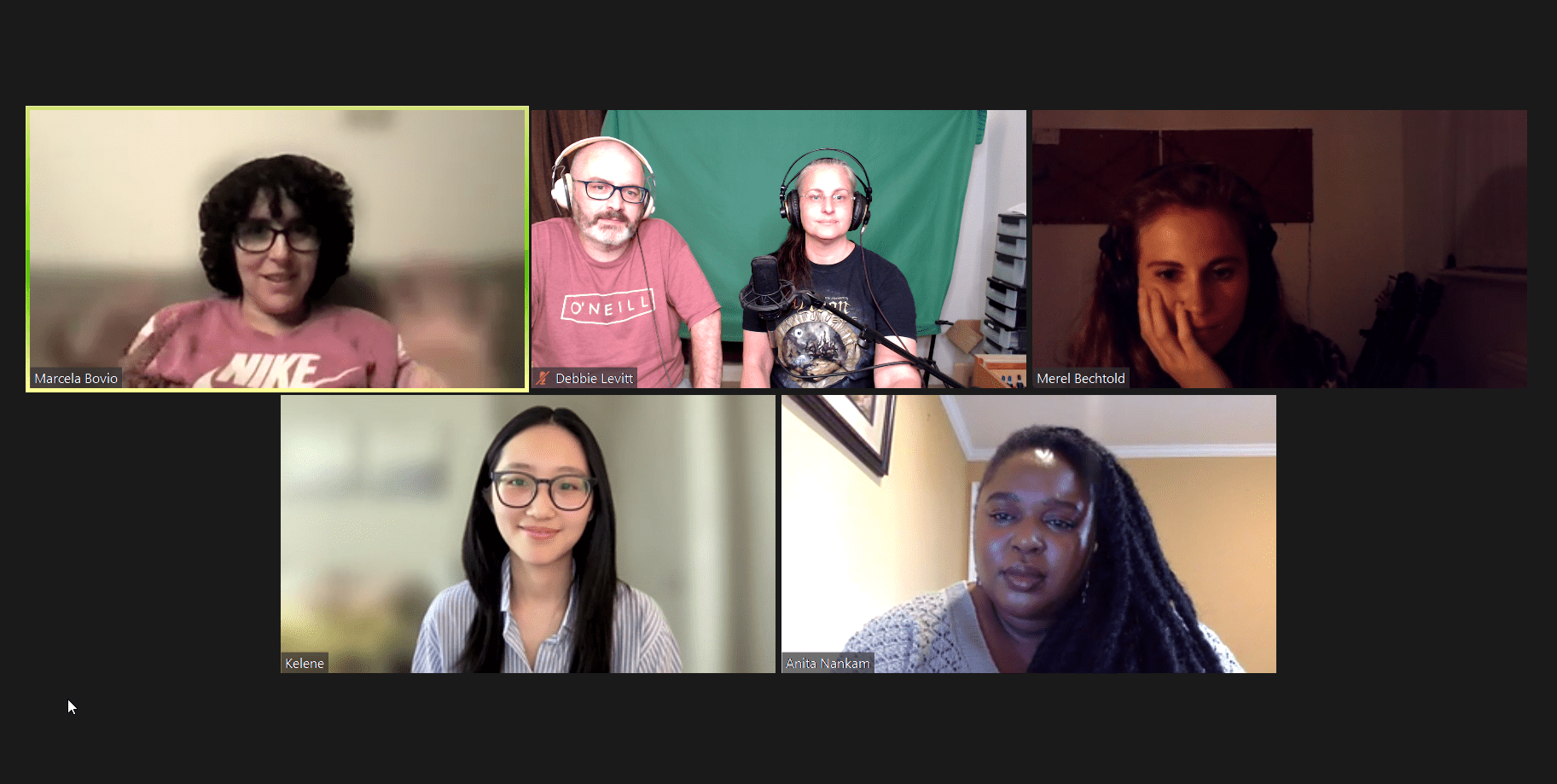Level UP Music Academy Case Study
Background
In April 2021, Marcela Bovio, one of my (Delta CX CXO Debbie Levitt’s) favorite singers, asked if my boyfriend could provide some WordPress help for Marcela’s coming business venture, an online music school. Her partner for Level UP Music Academy (LUMA) is the awesome Dutch metal guitarist Merel Bechtold, known for her work with Delain, Mayan, and Dear Mother. Marcela is known for her solo albums as well as her work with Stream of Passion, Ayreon, The Gentle Storm, Mayan, and Dark Horse White Horse.
I asked what they knew about their potential customers. Not much. Well, how about we spin up a research project for some of our Delta CX apprentices?
Since I invented a project they hadn’t previously wanted, I offered it for free, but paid the apprentices out of my own pocket (because all apprentices should get something for their work).
I selected Kelene Lee and Anita Nankam, who agreed to the apprentice adventure. Aiming for a project with a great story for their portfolios, I planned for each do some individual research as well as some work as a team.
Note: The Delta CX Apprenticeship Program is by invitation only. There is no application. As projects arise that could be worked on by well-coached apprentices, I choose people from the Delta CX online community and people I’ve gotten to know through coaching calls. Please don’t contact me and ask to apply for an apprenticeship since that’s not how it works here. Thanks.
Project Planning
Kelene and Anita did all of the work themselves. My role was coach overseeing their work at each step, sometimes multiple rounds of reviews on the same task. This ensures work quality and helps apprentices level up, pun totally intended.
Goals, Planning, Strategy
We wanted to provide Marcela and Merel with more information about their potential music students. Who are they? Have they studied music before? Have they tried online or video courses? Would they be motivated by gamification? What is motivating and demotivating when it comes to music lessons?
The ultimate research goals were to give the client insights on their customers, and to provide research-based course, community, and business model suggestions.
Protocol, Script, Guide
Kelene and Anita wrote a session protocol based on having 30 minutes with potential LUMA students. We brought the best questions together, cleaned it up, and we were ready to recruit.
Recruiting, Scheduling, Communication
Kelene and Anita worked on the screener survey that we would send to the 120+ members of the LUMA email waiting list.
We were concerned that the mailing list would mostly have superfans who wanted to hear from Marcela or Merel but not really be potential customers. We decided to include a long text question about individual music goals. This should weed out any superfans who weren’t planning to study music with Marcela or Merel.
We split the target audience into groups based on which instrument people wanted to learn and whether or not they had taken formal lessons in the past. We considered a 5th group of people who wanted to learn instruments other than voice or guitar, but we had a low screener survey response indicating interests in other instruments.
We intended to meet n=30 people, roughly 15 for each apprentice. The incentive would be a free month from the music school once it opened.
Session Execution
26 participants showed up, split between the apprentices. Sessions ran around 30 minutes and were recorded in Zoom. Participants were from Europe, the USA, and South America. All interviews were conducted in English.
Analysis, Synthesis, Patterns
Kelene and Anita loaded their Zoom recordings into Dovetail for transcription, coding, and tagging. They later moved their notes and findings into individual affinity maps in Miro. While reworking their boards (individually) a few times, they also reviewed each other’s boards.
Insights, Opportunities, Suggestions
The patterns, themes, and opportunities were clear. Typologies emerged. They both started on long-form reports, but the client was happy with just a presentation. So they switched to working on one unified slide deck to present live.
Research Analysis and Synthesis
The apprentices learned so much from their interviews that analysis was a bear. Better an insight feast than famine!
They started in Dovetail, which gave them a mostly-accurate transcription. They worked individually and together on coding and tagging.


Next they shifted to affinity diagramming in Miro to visualize themes and patterns.

Kelene’s Miro board.

Anita’s Miro board.
Final Presentation
We all gathered on Zoom for Kelene and Anita to present their findings, insights, suggestions, and business model advice.

Kelene and Anita did an amazing job presenting! Here are two of their slides.


“That was an amazing presentation! Thank you, guys. Incredibly professional. You guys just sailed through the content in a way that was very easy to understand. We have a lot we can focus on.”

